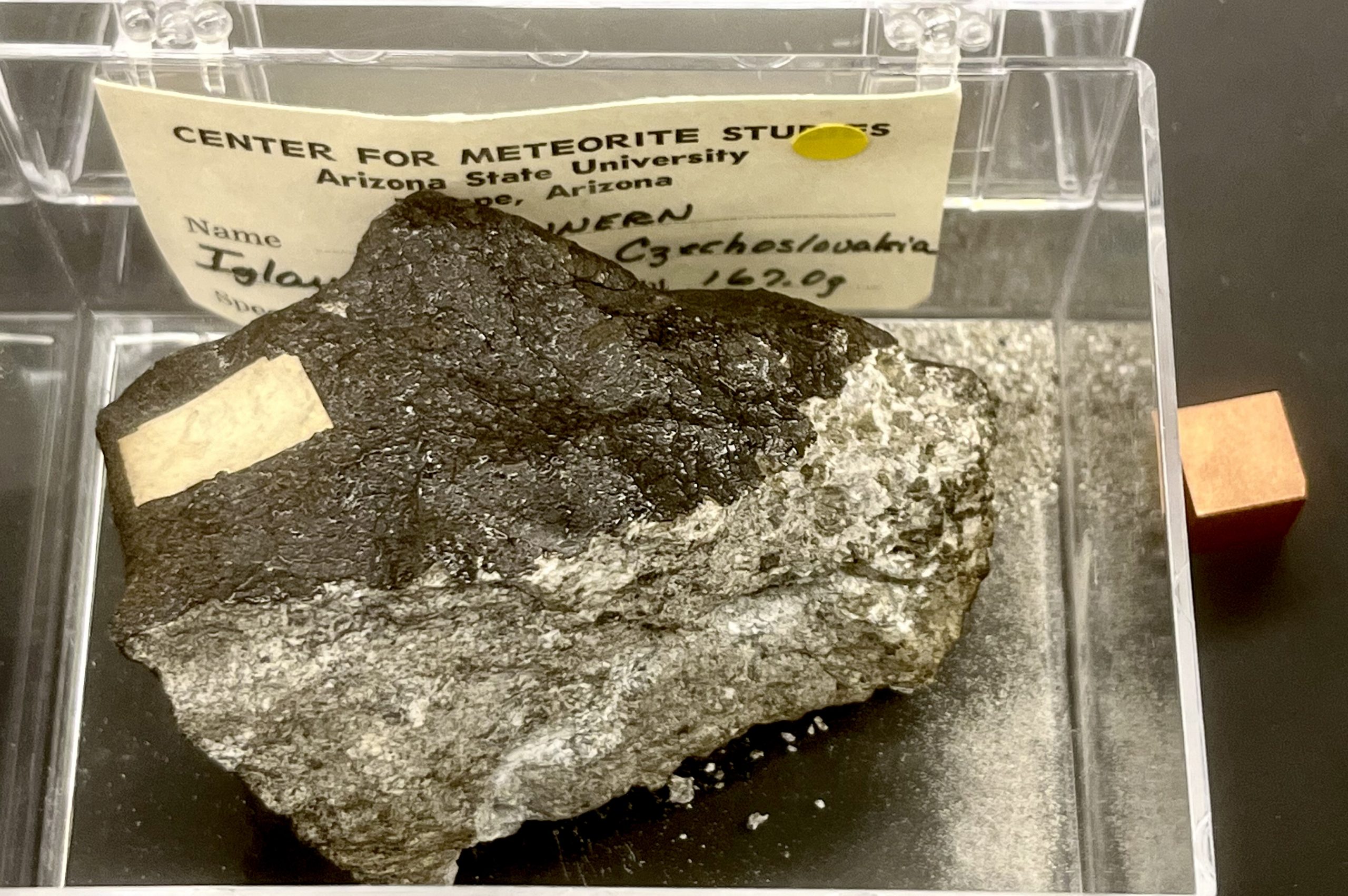Stannern
Stannern is an achondrite belonging to the Howardite-Eucrite-Diogenite (HED) group of meteorites, believed to have formed on the surface of asteroid 4-Vesta.
Eucrites are the most common type of achondrite meteorite falls (vs. finds) and are believed to have formed from the cooling of magma on the surface of the Asteroid 4-Vesta; the number 4 refers to Vesta being the fourth asteroid ever discovered, in March of 1807, by German astronomer Heinrich Wilhelm Olbers.
Stannern fell shortly before 6AM on the morning of May 22, 1808, in what is now the Czech Republic, and was widely observed by early morning churchgoers near the village of Stonarov (original German for Stannern) and neighboring villages. According to witnesses, 200-300 stones fell over the course of approximately 8 minutes, resulting in a strewnfield almost 8 miles long.
